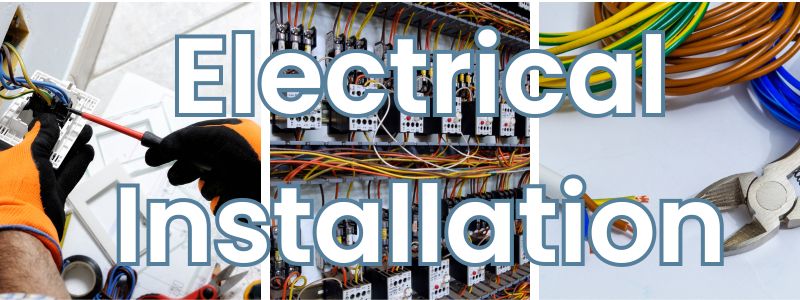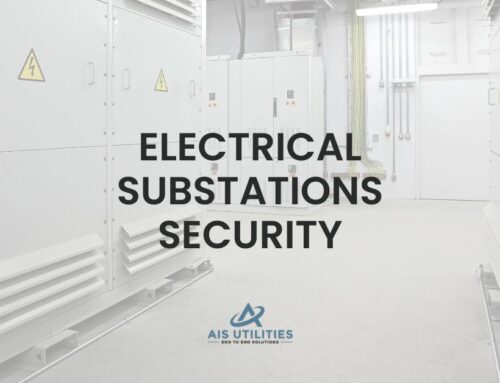
What does electrical installation mean?
Electrical installation refers to installing electrical systems within a building or property to ensure a safe and efficient power supply. This includes designing, wiring, and testing various electrical devices and equipment such as outlets, lighting fixtures, and appliances. Electrical installation must comply with regulations and standards to guarantee electrical safety, whether it’s a residential home, business unit, or industrial setting. A professional electrician or electrical contractor must get the necessary training and support to qualify for such complex work. They must also be registered with bodies like NICEIC in the United Kingdom to ensure the job is fully compliant and up to standard.
Electrical installation may also include maintaining and repairing electrical systems and equipment to help find and resolve potential issues that could cause a short or shock. This is vital in protecting the property and its inhabitants from electrical hazards. Additionally, electrical installation extends to commercial and industrial settings where machinery and power supply units must be connected appropriately for efficient operations.
The importance of safe electrical installations
The importance of electrical installations cannot be understated in today’s modern world. Almost every aspect of our daily lives requires electricity in some form or another. We are surrounded by electrically powered devices and systems from our homes to our workplaces. Ensuring these installations are done correctly and maintained safely is crucial to avoid potential hazards. A faulty source of electricity can result in dangerous situations such as fires or electric shocks. This is why hiring the best professionals to contract for electrical installations is essential.
Whether it’s installing a new light switch or rewiring an entire building, every item that requires electricity to function needs to be correctly connected to a safe power source. Trying to find shortcuts or cutting corners regarding electrical installations can have disastrous consequences. It’s always best to leave this work to professionals with the knowledge and experience to do the job right.
What are the examples of electrical installation?
Electrical installation refers to installing electrical systems in buildings or structures to ensure they are safe and functional. Some examples of permanent electrical installations include wiring for lighting, power outlets, and appliances. This involves wiring through walls, ceilings, and floors to connect to the main electrical panel. Additionally, setting up electrical systems for heating and cooling systems, security systems, and communication systems are also part of electrical installations. Overall, electrical installations are essential for providing power and functionality to modern buildings and structures.
Who Can Complete Electrical Installation Work?
Electrical installation work should only be completed by qualified and licensed electricians who have the proper training and expertise. They are the only ones who should handle wiring, electrical connections, and installations to ensure safety and compliance with regulations. Attempting to complete electrical work without the necessary qualifications is dangerous and illegal. Electricians undergo rigorous training to understand electrical systems’ complexities and how to complete installations safely. Trusting a qualified electrician with electrical installation work is the best way to guarantee a safe and reliable outcome for your home or business.
When hiring an electrician, it is essential to look for someone who is licensed and insured. This protects the homeowner and the electrician in case of any accidents or damage during the project. It is also advisable to ask for references and their experience with similar projects. Additionally, obtaining multiple quotes and comparing them can ensure you get a fair price for the work to be completed. By finding a qualified and reputable electrician, you can have peace of mind knowing that your electrical installation work will be completed safely and effectively.
What are the steps in electrical installation?
Electrical installation involves several steps to connect electrical components safely and effectively. The first step is to plan the layout of the electrical system, including determining the location of outlets, switches, and fixtures. Next, the wiring is installed, which includes running cables through walls and ceilings and connecting them to the main electrical panel. Once the wiring is in place, devices such as outlets, switches, and light fixtures are installed. Finally, the system is tested to ensure everything functions properly and safely. Following all safety regulations and guidelines throughout the installation process is essential to prevent electrical hazards.
What are the requirements of any electrical installation?
Proper Planning: Before beginning any electrical installation, it is crucial to have a detailed plan in place. This plan should include the layout of the electrical components, the circuit design, and safety measures to be implemented.
Compliance with Codes and Regulations: All electrical installations must comply with national codes and regulations. These regulations are in place to ensure the safety of the installation and those who will be using it.
Quality Materials: Using high-quality materials is essential for a safe and reliable electrical installation. This includes wires, outlets, switches, and other components that meet industry standards.
Qualified Professionals: It is important to have certified and experienced electricians perform the electrical installation. This ensures the work is done correctly and safely.



